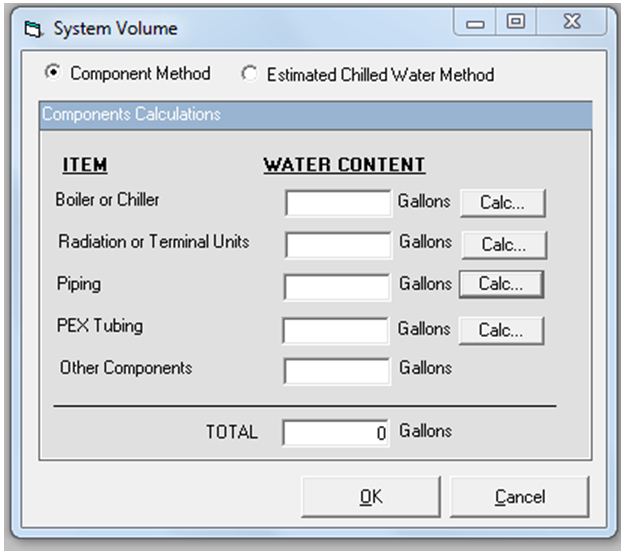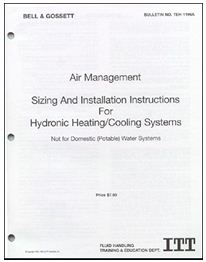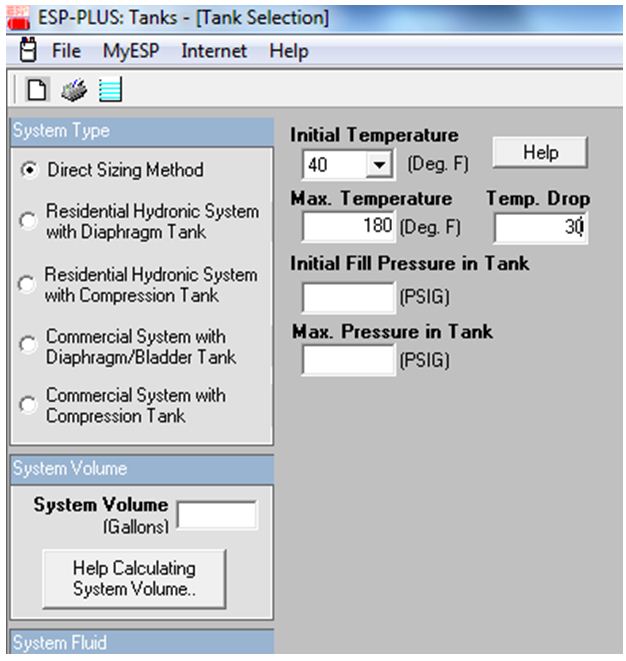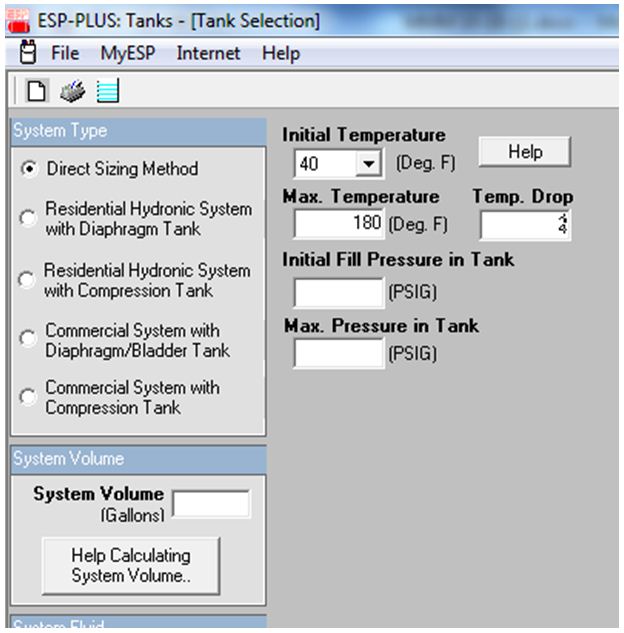Last week the Monday Morning Minute introduced the expansion and compression tank formula. We described the numerator as the tank acceptance. The formula is (Ef – Ep) X Vs where Vs is the system volume and (Ef – Ep) is the expansion of the fluid minus the expansion of pipe. Let’s review some of the required data.
The volume of the system is the most difficult item to calculate. Some drawing design programs will calculate the system volume for you. Sometimes you have the difficult task of measuring the pipe lengths and the need for a spreadsheet. Bell and Gossett offers a quick selection program in the ESP-PLUS. This program offers a handy calculator to help with the manual calculations saving time and money.
 |
 |
| click to enlarge | TEH 1195A |
The expansion of the fluid and pipe is calculated from the fill temperature to the average maximum temperature of the system. This is often miss-understood. It is not the delta T of the system or the return temperature to the supply temperature. Example: Assume you have a closed heating system in Cleveland with a supply temperature of 180°F and a return temperature of 150°F. The average of the design water temperature is 165°F. In a worst case, in the winter, the fill temperature could be 40°F. So the initial temperature is 40°F and the maximum average temperature is 165°F.
-
See the rest of this series:
Disclaimer: R. L. Deppmann and it’s affiliates can not be held liable for issues caused by use of the information on this page. While the information comes from many years of experience and can be a valuable tool, it may not take into account special circumstances in your system and we therefore can not take responsibility for actions that result from this information. Please feel free to contact us if you do have any questions.



